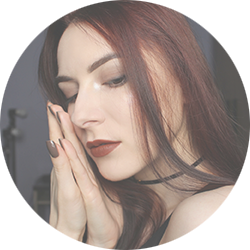







Welcome Back
Sign in to be closer to your community!
Follow other divas, like and comment
on their posts, message them, and see
who loved your posts!
Invalid username or password
You have not verified your account by clicking on the link we sent you via email. Please check your email folders (including your Spam folder) and click on the verify link sent.
Email is required
Password is required








Join FashionPotluck.com
Create your own profile in order to create content, follow other divas and like their posts, use our own messenger, and be a part of a growing international women community!
WELCOME TO OUR COMMUNITY
Fashion Potluck -
the first social media
platform for women.
You are free to read/watch & create content,
express your true self, and interact with others.
Join for free
Already a member? Log in here.
Purchase Alert
Dear Queen, you can only buy from one seller at the time. Please finish this purchase first in order to buy from another FP member
Comments
Please select one platform to continue
Please select one platform to continue
Please select one platform to continue
Please select one platform to continue
Please select one platform to continue
Please select one platform to continue
Please select one platform to continue
Please select one platform to continue
EDITOR APPROVED
You are wondering what is this 'Editor Approved'?
Well, this is pretty awesome! In order for the post to qualify and receive this accolade, it has to have a minimum of 700 words and two images (at least one original).
Receiving this accolade means two things: 1) Your content is amazing! Good job! 2) Your content qualifies for our monetization program. Every week two of the most read posts receive monetary rewards.
Have the badge & want to monetize your content?

LIFESTYLE

When you think of migraines, you probably conjure up images of a headache and visual aura symptoms. However, it is possible to have a migraine aura without experiencing headache discomfort.
While an aura without a migraine headache nj is uncommon, some migraine sufferers will experience an aura without head discomfort.
What Exactly Is a Migraine Aura?
A migraine aura is a collection of sensory changes that occur before a migraine headache. Many people perceive auras visually, with sensory disruptions such as flashes or sparks, spotty vision, seeing zig-zag patterns, or temporarily losing sight. A migraine aura can sometimes induce tingling or numbness in the torso, face, or hands. With a migraine aura, you may also have brief tinnitus, disorientation, and loss of ability to talk. Aura symptoms of migraine usually last an hour or less.
Auras from migraines are classified into three types: visual auras, sensorimotor auras, and dysphasic auras.A visual aura affects one's vision and involves symptoms such as seeing flashes.4 Sensorimotor auras cause motor and sensory symptoms such as numbness and tingling. A dysphasic aura has an effect on speaking.
Other Migraine Stages
A migraine aura is often the second stage. A migraine has four stages: prodrome, aura, attack, and post-drome. You may detect migraine warning symptoms one to two days before the headache develops during the prodromal period, which precedes an aura. Mood swings, excessive urination, frequent yawning, neck stiffness, and food cravings are among the warning signs. The postdrome stage of a migraine occurs after the attack stage, and you may feel fatigued, confused, or washed out for approximately a day. Not everyone who has a migraine will go through all four stages.
How to Recognise an Aura
The most frequent type of migraine aura is visual, and it affects 90 to 99 percent of patients who get auras.4 The following visual symptoms indicate a visual aura:
Blind spots;
Hazy vision;
Lines of zigzag shape;
Flashing lights;
Spots that are too bright and colorful;
A sensation of peering across water or heat waves.
Those who have migraine auras without a headache will also have these visual symptoms; the only difference is that the visual disturbances will not be followed by head pain. The symptoms of a migraine aura may fluctuate within the first five minutes of the aura and are usually preceded by a build-up of symptoms. The aura symptoms of a migraine aura without a headache often last 20 to 30 minutes. A migraine aura without a headache will be felt in both eyes, not just one.
If you are unsure whether the symptoms you are experiencing are due to migraine aura, you can seek medical advice.To confirm your aura symptoms and rule out a more serious issue, doctors can perform eye exams, computed tomography (CT) scans of the head, or magnetic resonance imaging (MRI).
What Causes a Migraine Aura When There Is No Headache?
Stress, weather changes, MSG-containing foods, light, and demographic characteristics that raise a person's susceptibility of migraines, such as genetics, are all factors that can cause a migraine aura without a headache. While the trigger factors for migraine auras with and without headaches are the same, research into why some people have auras without headaches is still underway.
How to Deal with a Migraine Aura
Even if you don't have head pain while you have a migraine aura, the symptoms can be annoying and irritating. Fortunately, there are a few therapeutic options available to assist in reducing the severity of your migraine symptoms.
Take some pain reliever
A pain treatment containing acetaminophen and aspirin can help reduce aura symptoms and any accompanying pain.
Magnesium Supplementation
Taking magnesium supplements may aid in the relief of a visual migraine aura.
Take additional nutritional supplements such as CoQ10 and Riboflavin
Some people find that taking supplements can help reduce the severity and frequency of migraines.
Develop Healthy Lifestyle Habits
Although there is no one-to-one lifestyle change that will prevent migraine auras without headaches, there are certain changes you may make to prevent them. Make an effort to obtain enough sleep and regulate your stress levels. If you get migraines, you should also avoid known migraine triggers.
-
 Olympic S :
Olympic S :
Your shared knowledge is commendable. I encourage you to maintain a regular writing schedule on this issue. geometry dash online
Comments
Related Posts
- What Makes Men’s Accessories Worth Investing In Today? by Ekim Fashion 0
- How to Plan Seasonal Plush Inventory Without Overbuying by Harnel Inc 0
- 6 Winter Season Reasons to See a Dermatologist ASAP by Monica Quinn 0
More Posts
- Affordable Embroidery Services | Free Design Assistance by Embroidery Designs 0
- Beyond the Hardwood: Finding the Fun in Absurd Physics Games like Basket Random by Suzanna Brown 0
- Why Cowboy Ties Are Making a Bold Fashion Comeback This Year by Rocky Mountain Western 0
Vote content out
Reason for voting this content out?
Reason for voting this content out?


 Login with Google
Login with Google Login with Twitter
Login with Twitter






 by
by
Add Comments